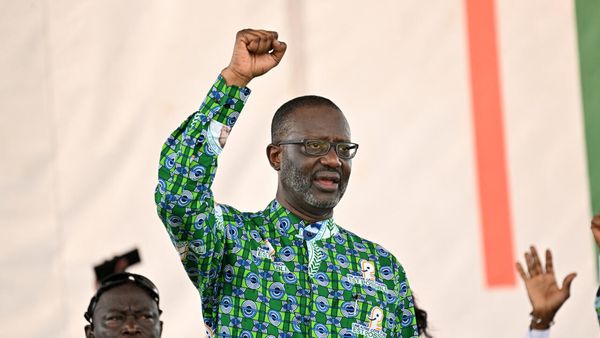
Good morning. Modern CFOs are informing and driving strategy. For Carvana’s CFO Mark Jenkins, that meant tapping into his own experience as a professor to help build a strategic turnaround for the company, which met economic headwinds amid a meteoric rise.
Based in Tempe, Ariz., Carvana, a Fortune 500 company, is an e-commerce platform for buying and selling used cars. Since the start of 2023, Carvana's stock price increased more than 3,000%, making a turnaround following tumultuous times in 2022.
Back when Jenkins was at Stanford University earning his doctorate in economics, he conducted auto industry research. Through the professors, he got to know Ernie Garcia, III, who was then working at DriveTime Automotive Group. Jenkins would eventually become a finance professor at Wharton. He stayed in touch with Garcia over the years, who went on to cofound Carvana in 2012.
In early 2014, the company started getting some traction, and went from selling 10 cars a month to 100, Jenkins said. As the CEO, Garcia reached out to Jenkins and asked him to join Carvana as CFO. Jenkins answered the call and became Garcia’s strategic partner. Carvana eventually went public in 2017.
The company had a meteoric rise, earning $5.587 billion in revenue in 2020, and in 2021 landed on the Fortune 500 list for the first time. Carvana was positioned for big growth in 2022, but then interest rates began rising along with car prices. The company had taken on debt, which led Wall Street to have bankruptcy concerns. CVNA plummeted to an all-time low of $3.55 on Dec. 7, 2022, a 99% plunge from a record high of $370.10. Carvana reached a deal with noteholders that included restructuring its debt, reducing near-term cash interest expense and extending maturities.
Carvana had to pivot from growth to profitability, Jenkins said. “We went from a world where we had a very distributed set of priorities to a world, starting in 2022, where we really narrowed our focus,” he said.
Strategic Initiatives
In addition to Jenkins' traditional CFO duties, he oversees the team that owns strategic planning, Carvana's lending platform, marketing distribution and the data science behind vehicle acquisition, assortment, and pricing. The turnaround process began with breaking down complex topics into understandable “stretch goals to the individual teams, that keep each group focused while collectively allowing us to reach to achieve great things,” Jenkins told me.
Carvana rolled out a three-step strategic plan that was an entire company effort. The first step was to get the company back to positive Adjusted EBITDA. That required placing a lot of scrutiny at the individual expense and revenue line-item level and having targets for even the smallest revenue and cost line items, he explained. The company cut $1.1 billion of annualized selling, general, and administrative expenses, which included layoffs, and reached its target in Q2 of 2023.
Then, in mid-2023, Carvana moved the second step, which was focused on taking the company from just breaking even with EBITDA to generating significant positive cash flow, Jenkins said. Carvana saw opportunities to drive fundamental improvements in unit economics by getting more efficient and realizing the benefits of its vertically integrated business model, as well as the use of automation. As of Q1 2024, Carvana was generating cash from operations that significantly exceeded its financial obligations.
And, step three for Carvana was to return to a long-term focus on profitable growth. During its Q1 earnings call in May, the company explained that it was beginning to transition its focus to this step.
Effective storytelling—being able to clearly explain your strategy and the reasoning behind it—was very important, Jenkins said. “We presented it to investors as a very simple three-step plan,” he said.
Q1 and beyond
The moment set Carvana up for a profitable 2024. “In late 2022 to early 2023, people really questioned whether or not we had a business model that would work in the long run,” Jenkins said. “Soon after, in Q1 2024, we had industry-leading growth and profitability at the same time.”
In Q1, Carvana sold 91,878 retail units, up 16% year over year, for total revenue of $3.1 billion, up 17%. The company also set new Q1 records on key profitability metrics with net income of $49 million and adjusted EBITDA of $235 million. Carvana will release its Q2 earnings report on Wednesday.
What’s Jenkins’ outlook? “We have made tremendous gains over the past couple of years, but we still see very significant opportunities for further gains, so we don't think we're done,” he said.
Sheryl Estrada
sheryl.estrada@fortune.com
The following sections of CFO Daily were curated by Greg McKenna.







